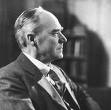Geoffrey Ingram Taylor 1886 – 1975
May 29, 2009
 Geoffrey
Ingram Taylor OM
1886 – 1975 was a physicist, mathematician and expert on fluid dynamics
and wave theory. He has been described as “one of the greatest physical
scientists of the 20th century”.
Geoffrey
Ingram Taylor OM
1886 – 1975 was a physicist, mathematician and expert on fluid dynamics
and wave theory. He has been described as “one of the greatest physical
scientists of the 20th century”.
Geoffrey Ingram Taylor was the great grandson of the homeopathic pioneer Thomas Roupell Everest, the grandson of George Boole, the son of Margaret Boole, and the nephew of Lucy Everest Boole, Alicia Boole Stott, Ethel Lilian Boole Voynich,
Born in St. John’s Wood, London, Geoffrey Ingram Taylor’s father was an artist, and his mother, Margaret Boole, came from a family of mathematicians (his aunt was Alicia Boole Stott and grandfather George Boole).
Taylor followed in the latter’s footsteps reading mathematics at Trinity College, Cambridge. As a child he had become fascinated by science after attending the Royal Institution Christmas Lectures and had performed experiments using paint rollers and sticky tape.
His first paper was on quanta showing that Young’s slit diffraction experiment produced fringes even with feeble light sources such that less than one photon was present at a time. He followed this up with work on shock waves, winning a Smith’s Prize.
In 1910 he was elected to a Fellowship at Trinity College, and the following year he was appointed to a meteorology post, becoming Reader in Dynamical Meteorology. His work on turbulence in the atmosphere led to the publication of Turbulent motion in fluids, which won him the Adams Prize in 1915.
In 1913 Taylor served as a meteorologist aboard the Ice Patrol vessel Scotia, where his observations formed the basis of his later work on a theoretical model of turbulent mixing of the air.
At the outbreak of World War I, he was sent to the Royal Aircraft Factory at Farnborough to apply his knowledge to aircraft design, working, amongst other things, on the stress on propeller shafts. Not content to simply sit back and do the science, he also learned to fly aeroplanes and make parachute jumps.
After the war Taylor returned to Trinity and worked on an application of turbulent flow to oceanography. He also worked on the problem of bodies passing through a rotating fluid.
In 1923 he was appointed to a Royal Society research professorship as a Yarrow Research Professor. This enabled him to stop teaching which he had been doing for the previous four years and which he both disliked and had no great aptitude for.
It was in this period that he did his most wide ranging work on the mechanics of fluids and solids including research on the deformation of crystalline materials which followed from his war work at Farnborough. He also produced another major contribution to turbulent flow, where he introduced a new approach through a statistical study of velocity fluctuations.
In 1934, Taylor, roughly contemporarily with Michael Polanyi and Egon Orowan, realised that the plastic deformation of ductile materials could be explained in terms of the theory of dislocations developed by Vito Volterra in 1905. The insight was critical in developing the modern science of solid mechanics.
During World War II Taylor again worked on applications of his expertise to military problems such as the propagation of blast waves, studying both waves in air and underwater explosions. These skills were put to the service of scientists at Los Alamos when Taylor was sent to the United States as part of the British delegation to the Manhattan project between 1944 and 1945. In 1944 he also received his knighthood and the Copley Medal from the Royal Society.
Taylor continued his research after the end of the War serving on the Aeronautical Research Committee and working on the development of supersonic aircraft. Though officially retiring in 1952 he continued researching for the next twenty years, concentrating on problems that could be attacked using simple equipment. This led to such advances as a method for measuring the second coefficient of viscosity. Taylor devised an incompressible liquid with separated gas bubbles suspended in it. The dissipation of the gas in the liquid during expansion was a consequence of the shear viscosity of the liquid. Thus the bulk viscosity could easily be calculated. Other late work included the longitudinal dispersion in flow in tubes, movement through porous surfaces and the dynamics of sheets of liquids.
Aspects of Taylor’s life often found expression in his work; his overriding interest in the movement of air and water, and by extension his studies of the movement of unicellular marine creatures and the weather, were related to his lifelong love of sailing. In the 1930s he invented the ‘CQR’ anchor which was both stronger and more manageable than any in use and which was used for all sorts of small craft including seaplanes.
His final research paper was published in 1969, when he was 83. In it he resumed his interest in electrical activity in thunderstorms, as jets of conducting liquid motivated by electrical fields. The cone from which such jets are observed is called the Taylor cone for his namesake. In the same year Taylor was appointed to the Order of Merit.
He suffered a stroke in 1972 which effectively put an end to his work; he died in Cambridge in 1975.